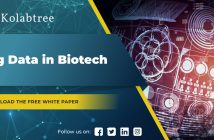Freelance tech writer Ashley Wilson outlines some ways AI can help with data recovery and backup.
The digital revolution has brought together a synergy of new technologies combining cloud computing, mobile devices, and artificial intelligence. New technologies have made the task of backing up business systems and customer data more complex. Software-as-a-Service applications are replacing traditional desktop apps and local data centers so data repositories are moving into the cloud. Regulators have released new laws and rules that govern data security and privacy. These trends are making data retention and systems recovery a complex task to manage.
The importance of efficiently managing a business’s data backup has increased as a result. In this article, we’ll cover five ways AI can make data backup and recovery more efficient.
#1 Self-Driving Backup
New backup technologies are emerging that leverage artificial intelligence and machine learning to automate the ongoing task of backing up critical data and software components. These intelligent tools can be trained by IT engineers to follow the priorities and requirements for the business’s data security and recovery plans.
Given the exploding size and complexity of data repositories controlled by large enterprises, these tools will become a requisite for maintaining an efficient backup process that can react nimbly to changing requirements. The labor savings of these self-driving backup systems can be significant.
The intensive, manual oversight chore of managing the daily backup tasks for an ever-growing list of data stores and applications can occupy an entire team of IT professionals at many enterprises.
Those resources can be dedicated to more productive tasks with a self-driving backup system powered by well-trained AI components.
#2 Incident Response
When an incident takes place that compromises a business’s ability to function, it can be critical that the response is quick and effective. Customer SLAs often require a response within a short time, and disasters call for immediate action.
AI systems can enhance incident response in a couple of key ways.
- One is to offer recommendations for actions an incident response team should consider taking. AI can analyze large amounts of data from multiple sources faster and more objectively than humans can. In a large enterprise environment, an AI can serve as a critical aid in making quick decisions during the critical minutes immediately after an incident.
- A second way that AI can help mitigate the aftermath of an incident is to assist human responders with the automated execution of recovery tasks. For example, if a large number of network servers need to be reinstalled or reconfigured, AI can be programmed to handle the recovery tasks faster than a human team could manage.
#3 Recovering Business Assets
When business processes or workplaces are disrupted by an incident, it can be difficult to organize a recovery plan manually. That difficulty increases exponentially with the size and number of the affected business units.
AI recovery and backup systems can include algorithms designed to assist incident response teams with organizing alternate resources and workspaces.
When a mitigation plan involves hundreds of employees, the analytical power of AI can create a recovery plan for decision-makers to review much faster. For example, a business recovery plan can include a detailed database of key equipment and office locations that an AI component can access and use to draw up a new organization chart. The incident response team would simply need to indicate which assets and locations were unavailable. The AI would need to transfer applications and data stores as necessary to recreate the business processes that need to be reconstituted.
Many of these tasks can be accomplished faster and more reliably when executed by an automated AI programmed ahead of time.
#4 Recovering Technology Assets
AI backup and recovery systems can cope with technology failures if a detailed re-installation process is documented and integrated with the AI component. Depending on how reliably they can perform diagnosis and recovery operations, an AI recovery system could monitor a technology system and intervene whenever a failure is detected.
With experience and training, such AI systems could dramatically improve incident response when the causes and remedies are well-known in advance.
The complexity of technology assets today will make AI backup and recovery an important tool to efficiently handle the recovery of data stores, virtual servers, and cloud-based databases.
The network configurations that underlie cloud-computing systems can be difficult to troubleshoot and reorganize manually during a major technology failure, but automation can take some or all the technical pain out of the process.
#5 Linking Recovery Processes
Of course, business and technology recovery plans are often intertwined when an incident impacts both information systems and business operations.
Many technology failures that happen don’t immediately impact operations because the systems have backups, they aren’t in use, or there are manual processes that workers can use. When a technology incident requires a response in operations, AI components handling a technology recovery can alert first responders that business disruption is likely or in progress.
Linked AI systems that automate business and technology backup and recovery actions can communicate and trigger each other’s actions with human oversight. The overall effect of integrated AI components is to make the business more resilient and quicker to recover from system failures or non-technical incidents.
In both cases, automated backup and recovery systems can make complex problems easier to manage.
Conclusion
As organizations continue to grow larger and expand the horizons of their digital operations, the need for intelligent and automated backup systems will increase. With regulators requiring data to be handled differently depending on privacy and security concerns, large organizations will need to automate the management of their data stores. Whether during routine backup operations or in the middle of recovering from a disaster, data handling will require careful management to ensure compliance and business continuity. Automated systems will be one way to do this with a reasonable amount of human oversight.
Need to consult an Artificial Intelligence expert? Choose from 10,000+ freelance scientists on Kolabtree.







